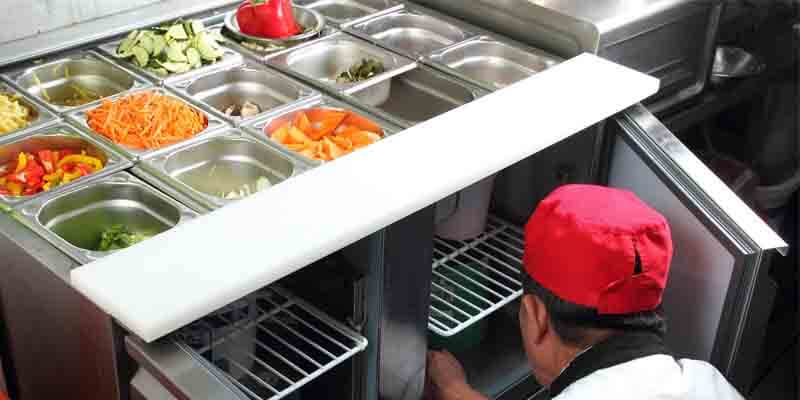
It’s common knowledge that taking inventory is a necessity for the management restaurants. However, there are many conflicting views on how and when inventory should be taken. One of the main successful concepts of owning a restaurant is knowing how to balance your inventory properly. Remember, your inventory costs affect your menu costs. If you’re not balancing your inventory properly, and your menu prices are too low, you don’t make money. We debunked 6 inventory management myths below
Myth 1: It Takes Too Long
If you feel inventory is taking you too long, it’s boring, and it’s tedious, then you are doing it wrong. That means going around to every area where your inventory is housed and taking counts then placing it into a spreadsheet. Doesn’t that sound boring? Because it’s so boring, it sets you and your staff up for failure. Eventually, shortcuts are found and you find yourself trying to cut corners because the boredom has taken over. When you cut corners or take shortcuts, mistakes will happen and they will cost your restaurant. Inventory management doesn’t have to suck so badly. There is a much better strategy, and it’s called going online.
Myth 2: Automation Software Costs a Lot & Takes Too Long to Setup
Inventory software has come a long way in the past few years. If you’re a seasoned restaurant owner or manager, you would prefer to keep your tedious inventory procedures than spending tens of thousands of dollars on a system and the staff training. Hello! We are in a technology age. A good inventory management software doesn’t have to cost much at all, and there are even some like Linga POS that can integrate with your point of sale system. That means getting in-depth reporting, price lookups, menu automation, and more at the palm of your fingertips. In a matter of minutes, you can view what you have on hand, what you need, and how many of that extra ingredient you need to serve on special.
Myth 3: Inventory Can Be Done Whenever
Just because you had a slow day or a slow week does not mean you can skip out on taking inventory. Let’s face it, doing inventory is probably very low on your to-do lists. Put that notion of your mind! You have to stop believing in doing inventory when it’s convenient. It’s good to stick to a schedule when taking inventory. At least make your inventory mandatory once a week, and the same day every week. Remember that every time you order too much or you let items spoil, you will wasting money. According to the National Restaurant Association, there were roughly three-quarters of all restaurant operators who reported food costs as a challenge in 2014. They go on to say how tracking food waste is a great way to reduce purchasing costs.
Myth 4: Training Staff is Hard & Time-Consuming
We get it, owning and managing a restaurant can be very time-consuming. Training staff on new equipment or procedures can take some time, and everyone’s learning curve is different. However, you don’t need to train every single member of your staff on an automated inventory management system. In fact, it’s better to have a lesser amount of people working with inventory. It’s like the saying when you have too many hands in the pot. When you have more people taking inventory, it’s an increased likelihood for more mistakes to happen. It’s just asking too much for all of your employees to be proficient with inventory. You should pick out a maximum 3 or 4 employees, and have inventory be a part of the dedicated position.
Myth 5: It’s better to Be Overstocked than Under
It’s never fun telling a customer that you’re out of a menu item. We get it, you want to always be prepared for your customers. However, you don’t want to overextend your restaurant and have food waste pile up. You’re never going to be 100% on target for your inventory percentage amounts. They will fluctuate as a customer’s behavior changes. It’s never better to be overstocked or even understocked. They are both equally bad for your business. With overstocking, you get food waste, and with understocking, you miss out on profits.
Myth 6: It’s Ok to Make Estimates
Doing inventory does not count if you walk through your kitchen and take mental calculations of how much of each ingredient you have. Even if you are a seasoned restauranteur, it’s impossible to account for every fluctuation for all of your ingredients. It’s not an accurate process because your customer traffic is always changing. For example, you may be able to see if you have a significant surplus or decline in inventory, but you can’t see how long you have had the inventory. This would put your restaurant in a bind if you decided to run a special for your surplus and you don’t know how much to serve.
Conclusion
It’s time to get real about inventory management. Let’s get real, a good chunk of your operating costs amounts to the items you buy so effective inventory management is crucial to the success of your business.
Having effective inventory management decreases food waste, determines what and how much ingredients you order, and can be one of the biggest ways you can cut costs. It’s going to be more beneficial for your restaurant if you don’t listen to the myths and find the best inventory management that works best for your restaurant.

